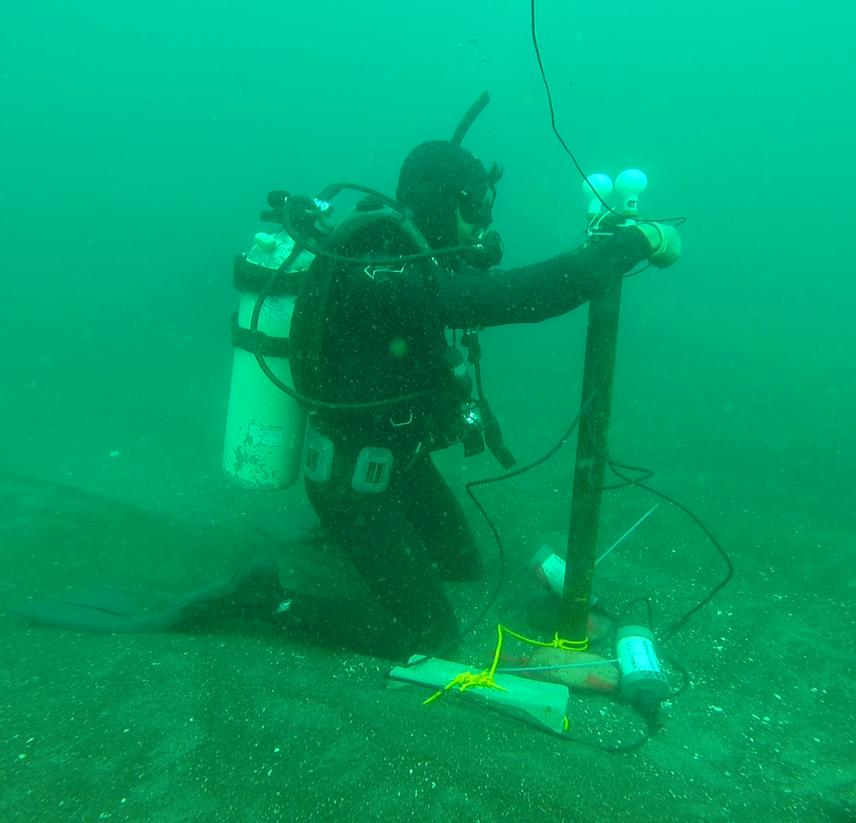Schery Umanzor
This project aims to build upon the findings of existing and ongoing research to achieve a broader understanding of the stability and resilience of giant kelp forests. We expect to provide a critical evaluation of the potential for giant kelp restoration to improve ecosystem structure and function, to the benefit of important fishery species in Baja California. We also expect that this project serves as a model to restore and rejuvenate kelp beds along the Northwest Pacific Coast of Baja California.

We installed some measuring equipment nearby our kelp patches.
The giant kelp, Macrocystis pyrifera, is the largest macroalgae in the world. It is a vital ecosystem engineer, providing habitats that support biodiverse and productive food webs. Giant kelp forests with in the Northwest Pacific Coast of Baja California have been reduced drastically due to human pressures and climate change that have triggered abnormal environmental conditions. This project focuses on restoring small kelp patches within Todos Santos Bay in Ensenada, Baja California Mexico. Successful patches could be the foundation to later to kelp forests.
We will first need to provide an adequate hard substrate by installing an arrangement of artificial reefs into sites where large forests used to occur. These artificial reefs are important because in the absence of a rocky bottom, kelps will need of alternative hard substrates to which they can securely attached to successfully develop and persist. Then, we will transplant young individuals from nearby forests. We will also transplant individuals produced and developed under laboratory conditions. We expect the transplanting process to occur throughout the length of the project, as kelp individuals could dislodge from the artificial reefs because of strong currents or waves, just as it occurs in standing underwater forests. We will closely monitor kelp growth and their biological interactions with other organisms. This will provide evidence about the success of the project.
This reforestation project will consist of two stages. First, an early ‘establishment’ phase in which kelp individuals will be placed on the artificial reef structures, and second, a long-term ‘building’ phase in which recruitment and natural establishment is expected to occur. We will measure our success by the effective establishment of the initial transplants to the growth of kelp individuals and the evaluation of environmental and potential socioeconomic benefits.
Our team includes five main collaborators, two marine biologists, two oceanologists and a chemist. We also have a list of volunteers ready to participate. We expect that by showing the feasibility of kelp restoration, and the ecological and eventual socioeconomic relevance, we will be able to promote underwater reforestation practices, not only in Bahía Todos Santos, but also in other regions of Baja California experiencing kelp forest loss. We except that the proof of concept proposed here, will contribute enhancing conservation efforts towards kelp forest ecosystems.